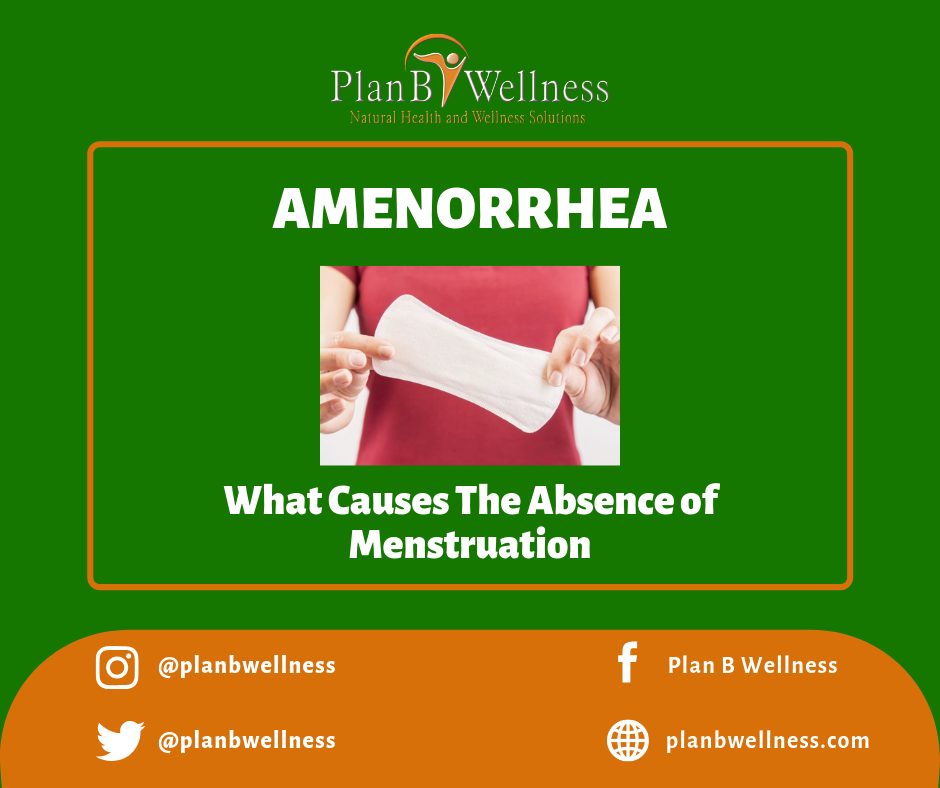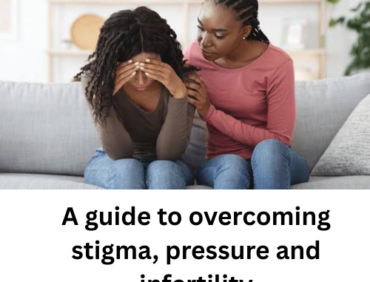The absence of menstrual periods (amenorrhea) is a common type of menstrual problem in women of reproductive age. This condition involves an absence of menstruation for 3 months or longer in a sexually mature woman who is not pregnant or breastfeeding.
Amenorrhea is a symptom of other disorders, which can range from minor to serious. It is a symptom with many potential causes.
Primary amenorrhoea (menstrual cycles never starting) may be caused by developmental problems, such as the congenital absence of the uterus or failure of the ovary to receive or maintain egg cells.
Also, delay in pubertal development will lead to primary amenorrhea. It is defined as an absence of secondary sexual characteristics by age 14 with no menarche or normal secondary sexual characteristics but no menarche by 16 years of age.
Secondary amenorrhoea (menstrual cycles ceasing) is often caused by hormonal disturbances from the hypothalamus and the pituitary gland, from premature menopause or intrauterine scar formation (intrauterine adhesion/asherman’s syndrome.
It is defined as the absence of menses for three months in a woman with previously normal menstruation, or nine months for women with a history of oligomenorrhoea (a condition in which you have infrequent menstrual periods
The most common cause of amenorrhea is pregnancy. Other causes of amenorrhea include problems with the reproductive organs or with the glands that help regulate hormone levels. Treatment of the underlying condition often resolves amenorrhea.
The main sign of amenorrhea is the absence of menstrual periods. Depending on the cause, you might experience other signs or symptoms along with the absence of periods, such as:
- Milky nipple discharge
- Hair loss
- Headache
- Vision changes
- Excess facial hair
- Pelvic pain
- Acne
Causes of Amenorrhea
Amenorrhea can occur for a variety of reasons. Some are normal during the course of a woman’s life, while others may be a side effect of medication or a sign of a medical problem.
Conditions that can cause amenorrhea include the following:
- Eating disorders (e.g., anorexia, bulimia)
- Excessive exercise and a poor diet
- Extreme physical or emotional stress
- Hormonal problems that involve the hypothalamus, pituitary, thyroid, ovary, or adrenal glands
- Medications (e.g., contraceptives)
- Very low body weight
Natural Amenorrhea
During the normal course of your life, you may experience amenorrhea for natural reasons, such as:
- Pregnancy
- Breast-feeding
- Menopause
Contraceptives
Some women who take birth control pills may not have periods. Even after stopping oral contraceptives, it may take some time before regular ovulation and menstruation return. Contraceptives that are injected or implanted also may cause amenorrhea, as can some types of intrauterine devices.
Medications
Certain medications can cause menstrual periods to stop, including some types of:
- Antipsychotics
- Cancer chemotherapy
- Antidepressants
- Blood pressure drugs
- Allergy medications
Lifestyle factors
Sometimes lifestyle factors contribute to amenorrhea. For instance:
- Low body weight: Excessively low body weight — about 10 percent under normal weight — interrupts many hormonal functions in your body, potentially halting ovulation. Women who have an eating disorder, such as anorexia (a serious mental illness where people are of low weight due to limiting their food/energy intake) or bulimia, often stop having periods because of these abnormal hormonal changes.
- Excessive exercise: Women who participate in activities that require rigorous training, such as ballet, may find their menstrual cycles interrupted. Several factors combine to contribute to the loss of periods in athletes, including low body fat, stress and high energy expenditure.
- Stress: Mental stress can temporarily alter the functioning of your hypothalamus (an area of your brain that controls the hormones that regulate your menstrual cycle). Ovulation and menstruation may stop as a result. Regular menstrual periods usually resume after your stress decreases.
Celiac Disease
Celiac disease is a serious autoimmune disorder that can occur in genetically predisposed people where the ingestion of gluten leads to damage in the small intestine.
Untreated celiac disease can cause amenorrhea. Reproductive disorders may be the only manifestation of undiagnosed celiac disease and most cases are not recognized.
For people with celiac, a gluten-free diet avoids or reduces the risk of developing reproductive disorders.
Hormonal imbalance
Many types of medical problems can cause hormonal imbalance, including:
- Polycystic ovary syndrome (PCOS): PCOS causes relatively high and sustained levels of hormones, rather than the fluctuating levels seen in the normal menstrual cycle.
- Thyroid malfunction: An overactive thyroid gland (hyperthyroidism) or underactive thyroid gland (hypothyroidism) can cause menstrual irregularities, including amenorrhea.
- Pituitary tumour: A noncancerous (benign) tumour in your pituitary gland can interfere with the hormonal regulation of menstruation.
- Premature menopause: Menopause usually begins around age 50. But, for some women, the ovarian supply of eggs diminishes before age 40, and menstruation stops.
Structural Problems
Problems with the sexual organs themselves also can cause amenorrhea. Examples include:
- Uterine scarring: Asherman’s syndrome, a condition in which scar tissue builds up in the lining of the uterus, can sometimes occur after a dilation and curettage (D&C), cesarean section or surgery for removing uterine fibroids. Uterine scarring prevents the normal buildup and shedding of the uterine lining.
- Lack of reproductive organs: Sometimes problems arise during foetal development that lead to a girl being born without some major part of her reproductive system, such as her uterus, cervix or vagina. Because her reproductive system didn’t develop normally, she can’t have menstrual cycles.
- Structural abnormality of the vagina: An obstruction of the vagina may prevent visible menstrual bleeding. A membrane or wall may be present in the vagina that blocks the outflow of blood from the uterus and cervix.
Risk factors
Factors that may increase your risk of amenorrhea may include:
- Family history: If other women in your family have experienced amenorrhea, you may have inherited a predisposition for the problem.
- Eating disorders: If you have an eating disorder, such as anorexia or bulimia, you are at higher risk of developing amenorrhea.
- Athletic training: Rigorous athletic training can increase your risk of amenorrhea.
Complications of Amenorrhea
Complications of amenorrhea may include:
- Infertility: If you don’t ovulate and have menstrual periods, you can’t become pregnant.
- Osteoporosis: If your amenorrhea is caused by low oestrogen levels, you may also be at risk of osteoporosis — a weakening of your bones.
Amenorrhea Diagnosis and Treatment

Amenorrhea can be a sign of a complex set of hormonal problems. Finding the underlying cause can take time and may require more than one kind of testing.
Lab tests
A variety of blood tests may be necessary, including:
- Pregnancy test: This will probably be the first test your doctor suggests, to rule out or confirm a possible pregnancy.
- Thyroid function test: Measuring the amount of thyroid-stimulating hormone (TSH) in your blood can determine if your thyroid is working properly.
- Ovary function test: Measuring the amount of follicle-stimulating hormone (FSH) in your blood can determine if your ovaries are working properly.
- Prolactin test: Low levels of the hormone prolactin may be a sign of a pituitary gland tumour.
- Male hormone test: If you’re experiencing increased facial hair and a lowered voice, your doctor may want to check the level of male hormones in your blood.
Imaging tests
Depending on your signs and symptoms — and the result of any blood tests you’ve had — your doctor might recommend one or more imaging tests, including:
- Ultrasound: This test uses sound waves to produce images of internal organs. If you have never had a period, your doctor may suggest an ultrasound test to check for any abnormalities in your reproductive organs.
- Computerized tomography (CT): CT scans combine many X-ray images taken from different directions to create cross-sectional views of internal structures. A CT scan can indicate whether your uterus, ovaries and kidneys look normal.
- Magnetic resonance imaging (MRI): MRI uses radio waves with a strong magnetic field to produce exceptionally detailed images of soft tissues within the body. Your doctor may order an MRI to check for a pituitary tumour.
Scope tests
If other testing reveals no specific cause, your doctor may recommend a hysteroscopy — a test in which a thin, lighted camera is passed through your vagina and cervix to look at the inside of your uterus.
Treatment depends on the underlying cause of your amenorrhea. In most cases, natural remedies have always proven to be helpful for bringing back loss menstrual period.
A product we have successfully recommended for many women with great feedback is MensesBalance.
If you gained anything from reading this, do not hesitate to share it with other women too.
Use the comment box below to ask us any question about your menstrual period or your health in general.
Stay healthy and never give up!
Plan B Wellness
Tel/SMS/WhatsApp: +2348099666650
Email: consult@planbwellness.com
Twitter/Instagram: @planbwellness











[…] Lifestyle factors Sometimes lifestyle factors contribute to amenorrhea. For instance…read more on https://www.planbwellness.com/amenorrhea-what-causes-the-absence-of-menstruation/ […]
[…] All women produce vaginal discharges during their childbearing years, starting a year or two before puberty and ending after menopause. […]
[…] All women produce discharges during their childbearing years, starting a year or two before puberty and ending after menopause. […]
How long before my menstruation back?im taking injectable contraceptive..my first shot was May 2021 then August will be my next shot,but i missed it…the next month until now i never had a menstruation…..i was scared because my menstruation is normal so i bought a PT…the result is negative…my question is this normal?
Thanks for your comment madam.
As it is, only the doctor that is currently treating can answer your questions concerning the treatment you are on and the expectations.
Thanks